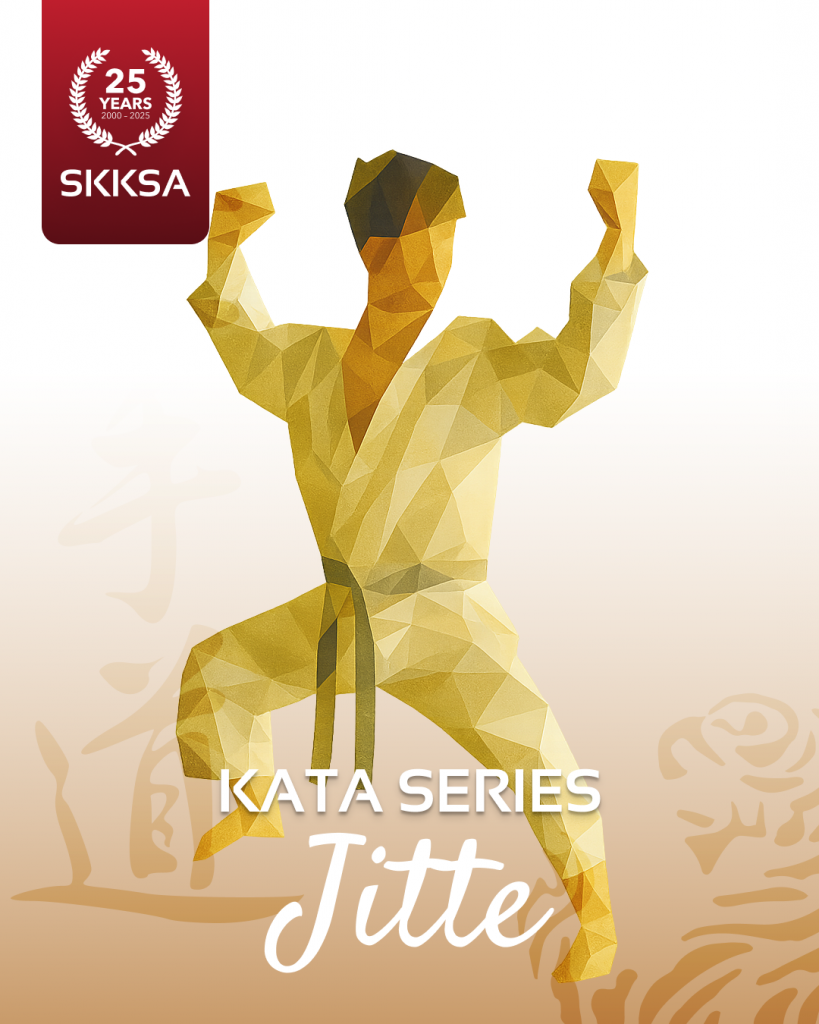Our Kata series continues this Saturday with the conclusion of the trilogy of Jion, Jiin and Jitte, with today’s focus being in Jitte.
An intermediate level kata, Jitte is usually introduced to students from Sandan onwards. Its meaning translates to “Ten Hands”. A popular explanation sometimes used is that the name alludes to the concept that once the kata has been mastered by the karateka, they can defend against multiple attackers. A more traditional explanation is that Jitte is named after a specialized weapon that was used by police in Japan, and some of the movements in the kata is representative of how an actual jitte is used.
The kata is well known for its bunkai techniques, particularly in defending against stick attacks (bo). Like its name, the kata performance emphasizes versatility and the application of various techniques against different attacks. The kata corporates techniques like wrist grabs, punches, and disarming a bo (staff), with a focus on hip movement and body rotation. The effective performance of using the hips to generate power with the torso as a single unit generates power in practical application (bunkai).
Jitte is often a difficult kata to master, or to even understand, as some movements appear awkward, and hard to make sense of when performing or learning the application. The student should begin by noting that Jitte is unique from other Shotokan katas, in that the meaning of “karate” –open hand – does not apply to Jitte, as the kata uses both attacks and defence against a Bo (stick).
Despite its complexity Jitte is a kata characterized by it boldness, strength and power, and we look forward to Aneel Sensei taking us through this kata at today’s Senior training session.
